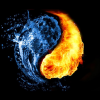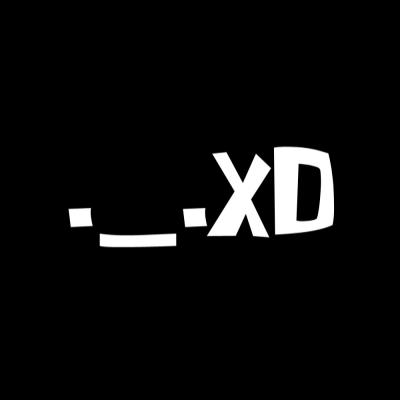Introduction
Hey there fellow runners! If you've checked the leaderboards at any point since 2021, you might've noticed there's a version number listed on all the runs. You might also know that I wrote a forum post explaining how to identify which version of the game you're running. But why all this hassle? Does having a different version of the game even matter? The answer, as you likely guessed when you clicked this post, is yes, and there are a number of reasons for that that we'll get into shortly.
A quick foreword first, though. The different versions of the game are very underutilized in speedrunning. This is partly because using old versions was against the rules for a long time. Unfortunately, all official means of updating are either guaranteed to be unavailable soon or are already unavailable, so changing the rules to allow old versions was the only option when looking to the future. This means that while people have stuck with version 1.1.0.0 of the PC game in the past, this is no longer the best version for speedruns—though arguably, it never was. But we'll get into that. For now, just keep in mind that you probably shouldn't follow the precedent, at least not until after you've finished reading this guide.
This page may be updated as new information comes to light.
Versions
Burnout Paradise comes in a whole myriad of flavors! Or rather, colors. They changed themes 3 times through updates... too bad colors don't make you faster. Or maybe they do in this case? We'll have to see. Anyway, here's a list of all the versions of the game we're about to discuss:
- 1.0: The first version of the game, released on disc for PS3 and 360 and later on Xbox Marketplace. Built between late October and mid December 2007 depending on the version.
- 1.1: Astaire update, released on PS3 and 360. Rolled into 1.3.
- 1.2: Bogart update, released on PS3 and 360. Rolled into 1.3.
- 1.3: Cagney update, released on PS3 and 360. Built mid July 2008.
- 1.4: Davis update, also called Burnout Bikes. Released on PS3 and 360. The PlayStation Store version of the game is on this update. Built early September 2008.
- 1.5: Trophies update, released on PS3. Built mid-late September 2008.
- 1.6: Unnamed update referred to by Criterion as "free 6th Feb update." Released on PS3, 360, and PC (version 1.0.0.0). Introduces the Party pack. The Ultimate Box discs are on this version of the game. Built between mid November and mid December 2008. PC 1.0.0.1 built mid January 2008.
- 1.7: Unnamed update introducing the Legendary, Toy, and Boost Special packs. Released on PS3, 360, and PC (version 1.1.0.0). Built early January 2009. PC 1.1.0.0 built mid March 2009.
- 1.8: Unnamed update introducing the Cops and Robbers pack. Released on PS3 and 360. Built mid March 2009.
- 1.9: Unnamed update (formerly Eastwood) introducing the Big Surf Island pack. Released on PS3 and 360. Built late April 2009.
Note that some versions of the PC game, such as the Steam version, contain a version.txt file incorrectly stating it is 1.0.0.1. In reality, these versions are 1.1.0.0.
With that out of the way, let's move on to the differences between versions.
Restarts
At the insistence of the game's creative director, Alex Ward, restarts didn't ship with the game. It was only in 1.6 that they finally allowed players to restart both during and after events. This may be a small change, but it has serious implications for full-game runs as many routes rely on restarts. In fact, this feature on its own could balance out the other changes we're about to get into.
There's also a cancel button in Remastered that cancels events, which isn't quite as helpful but still makes a difference and enables a bug useful for ILs. (Fun fact, the cancel button is supposed to cancel restarting, not cancel the event. It's working properly in the original game.)
Progression
Though the number of events required remained the same, there were multiple changes to the event types and events themselves in 1.6. Road Rage was updated to always have a 120 second timer and to extend the time by 10 seconds instead of 5 after a takedown, while Stunt Run timers count down slower at first and faster with higher scores. Early Burning Routes also had their time targets made easier (and got adjusted again in 1.9), and event rivals are slower. Traffic density in events has also been lowered while in B License and earlier.
Of course, those changes hardly impact runners, who are typically unaffected by difficulty levels. The important changes come in the form of updated minimum Road Rage targets, with events starting at 2 takedowns rather than 3 with a Learner's Permit, 14 instead of 10 with C License, 22 instead of 15 with B, 30 instead of 20 with A, and 40 instead of 30 with the Burnout License. This vastly increases the time required for Road Rage events and likely means that older versions would benefit from rerouting to take advantage of more of them.
1.6 wasn't the end of the Road Rage adjustments, though. In 1.9, the targets were decreased back down: 4 takedowns with D License (down from 6), 8 with C License, 12 with B, 16 with A, and 20 with the Burnout License. Remastered inherits these targets, and both versions are far quicker than 1.6-1.8 because of it.
In addition, the per event type rank thresholds for all three event types were changed in 1.6. Races and Road Rages require more wins to trigger a rank increase, while Stunt Runs need less wins. This means that Stunt Runs require a higher score sooner, Road Rages require it later, and races increase in difficulty more slowly. Stunt Runs and Road Rages are of particular interest in this case, and in older versions routing through more Stunt Runs may be beneficial. This also balances out Rage Rages, though routing through more than in 1.6 may still help due to the minimum targets being lower.
Vehicle performance
In their announcement for it, Criterion stated the 6th Feb update overhauled vehicles to be "slower, harder to crash and less likely to spin out at low speeds" so the game would be "easier and more accessible" to new players. They weren't lying. Several vehicles were nerfed in 1.6, and the lower down the stack you go, the more extreme the changes are. The Cavalry and SI-7 became so slow that Criterion actually revised them again in 1.9, giving them more powerful boost to compensate for their lackluster performance. Given this, you might be wondering what the heck made them do it in the first place. Sadly, not every question has an answer, but we at least have a clue.
So, what kind of differences are we talking? Well, the individual differences are listed below, but by and large Criterion's idea of overhauling handling seems to have been to decrease the top speed. In fact, every vehicle unlocked prior to the 500 GT (barring the Opus XS) had its top speed, both boosting and not, knocked down. Since that wasn't enough, though, many of those had their torque decreased as well. Decreasing the downforce (i.e., making the car jump better) was also a common change, as well as loosening the differential to make cars harder to spin out.
You'll find a per-vehicle summary of the changes below. Burning Route variants are generally similar with slightly different top speeds. Speeds are in mph, torque is in an unknown unit but likely lb-ft. Also note that these only apply to finish 1; I didn't look through the others, but there are minor differences. It's something I'll explore in the future for IL running. Bikes were not nerfed, and cars not listed were not nerfed.
If needed, you can find a more complete set of speed/acceleration stats for comparison in this spreadsheet.
- Hunter Cavalry: Top boosting speed decreased from 160 to 120 and top speed from 140 to 105. Max torque decreased from 519 to 250. Crash speed, boost acceleration, differential, wheel slip, steering angle, downforce, and reverse gear attributes adjusted.
- Hunter Mesquite: Top boosting speed decreased from 163 to 123 and top speed from 145 to 110. Max torque decreased from 400 to 300. Differential, downforce, and reverse gear attributes adjusted.
- Nakamura SI-7: Top boosting speed decreased from 170 to 126 and top speed from 137 to 112. Max torque decreased from 300 to 187. Differential, downforce, and reverse gear attributes adjusted.
- Hunter Vegas: Top boosting speed decreased from 165 to 129 and top speed from 149 to 116. Max torque decreased from 650 to 450. Differential and downforce adjusted.
- Krieger Pioneer: Top boosting speed decreased from 167 to 132 and top speed from 150 to 119. Max torque decreased from 420 to 320. Differential, downforce, and reverse torque scale adjusted.
- Nakamura Ikusa GT: Top boosting speed decreased from 170 to 136 and top speed from 157 to 126. Max torque decreased from 330 to 270. Differential, downforce, and reverse gear ratio adjusted.
- Kitano Hydros Custom: Top boosting speed decreased from 174 to 141 and top speed from 150 to 122. Max torque decreased from 350 to 280. Differential and downforce adjusted.
- Hunter Reliable Custom: Top boosting speed decreased from 173 to 143 and top speed from 154 to 126. Max torque decreased from 550 to 400. Differential and downforce adjusted.
- Watson R-Turbo Roadster: Top boosting speed decreased from 173 to 144 and top speed from 154 to 128. Max torque decreased from 280 to 235. Differential and downforce adjusted.
- Rossolini LM Classic: Top boosting speed decreased from 179 to 150 and top speed from 154 to 129. Max torque decreased from 280 to 230. Differential and downforce adjusted.
- Hunter Manhattan: Top boosting speed decreased from 182 to 154 and top speed from 160 to 136. Max torque decreased from 550 to 500. Differential, downforce, and reverse gear attributes adjusted.
- Carson Fastback: Top boosting speed decreased from 180 to 155 and top speed from 160 to 138. Max torque decreased from 500 to 410. Differential, downforce, and reverse torque scale adjusted.
- Carson Grand Marais: Top boosting speed decreased from 179 to 156 and top speed from 161 to 140. Differential and downforce adjusted.
- Montgomery Hyperion: Top boosting speed decreased from 174 to 153 and top speed from 158 to 139. Max torque decreased from 425 to 375. Differential and downforce adjusted.
- Krieger 616 Sport: Top boosting speed decreased from 183 to 163 and top speed from 162 to 144. Downforce adjusted.
- Hunter Spur: Top boosting speed decreased from 180 to 165 and top speed from 161 to 145. Max torque decreased from 450 to 400. Differential, downforce, and reverse torque scale adjusted.
- Montgomery GT 2400: Top boosting speed decreased from 185 to 168 and top speed from 166 to 151. Max torque decreased from 400 to 300. Differential, downforce, and reverse gear attributes adjusted.
- Jansen P12: Top boosting speed decreased from 181 to 172 and top speed from 166 to 153. Max torque decreased from 450 to 390. Differential, downforce, and reverse torque scale adjusted.
- Carson Inferno Van: Top boosting speed decreased from 177 to 168 and top speed from 166 to 154. Max torque decreased from 350 to 275. 1st gear gear up RPM aligned with other gears. Drag increased from 0.1 to 0.5. Mass increased from 2200 kg to 2700. Differential, downforce, time to steering lock, and various suspension attributes adjusted.
- Rossolini Tempesta: Top boosting speed decreased from 190 to 171 and top speed from 161 to 151. Max torque decreased from 350 to 300. Differential and downforce adjusted.
- Carson Opus: Top boosting speed decreased from 188 to 181 and top speed from 163 to 155.
- Carson Annihilator: Top boosting speed decreased from 185 to 183 and top speed from 166 to 159. Max torque decreased from 440 to 405. Differential and downforce adjusted.
- Jansen X12: Top boosting speed decreased from 191 to 185 and top speed from 164 to 159. Max torque decreased from 400 to 360. Differential and downforce adjusted.
- Kitano Touge Sport: Top boosting speed decreased from 187 to 185 and top speed from 168 to 165.
- Hunter Takedown 4x4: Top boosting speed decreased from 182 to 180 and top speed from 170 to 168. Max torque decreased from 550 to 500. Differential, downforce, wheel slip, time to steering lock, various suspension/roll/tire attributes, and reverse gear attributes adjusted.
- Krieger Racing WTR: Max torque decreased from 495 to 420. Wheel slip, crash speed, deformation limits, and various suspension/roll/tire attributes adjusted.
Sponsor cars
The ability to unlock sponsor cars was removed in 1.6. With the exception of the Steel Wheels GT, which is slower and heavier than the GT Concept, they all perform identically to their standard counterpart. They can be useful in full-game runs due to their being unlocked after certain license upgrades.
For B License runs and above, the Micromania Custom (available in the French version of the game) may be useful as it is slightly faster in top speed and acceleration than the Ikusa. For Elite License runs and above, the Walmart WTR and Circuit City Hot Rod (both available in the US version of the game) are slightly faster than the GT Concept. Other sponsor cars are equal to or slower than the car awarded from the license upgrade.
Airfield changes
In 1.3, the airfield was updated to be more player-friendly. This meant better split ramp placement, removal of props and, more relevant to us, the diminishing of a certain hill on the west side. That hill made it difficult to get the super jump, messing up collectible runs and costing a surprising amount of time even without failing.
This was the only major map change aside from the addition of Big Surf Island.
Takeaways
Given this list and the lack of any real runs on older versions, there are a number of things we can try. The most obvious is to take advantage of the faster cars and lower score thresholds, reroute, and see if it can match or beat versions that have access to restarts. This could be a much closer battle than you'd think just by looking at the changes.
Another thing would be to use any potential leftovers in the game. Some have already been found in the form of the Hippy Van and Tempesta Dream, community cars that weren't updated in 1.6 like their standard counterparts and are even faster than the Burning Route variants as a result. There are likely other leftovers we haven't discovered yet, albeit not vehicles.
It's also worth having a look at 1.9 if you've been running on 1.7. The routes should be reusable and despite minor loading time differences on real consoles, it should end up being faster. Plus the Cavalry is faster in 1.9.
And finally... this is where I'd normally write a conclusion as if it's an essay, but the real conclusion is you getting out there and speedrunning. In the versions section I was wondering whether colors make you faster. Yep, they do. But is it the red of 1.0, orange of 1.3-1.5, blue of 1.6-1.8, or blue/orange of 1.9 that's fastest? Only one way to find out. Happy running!







